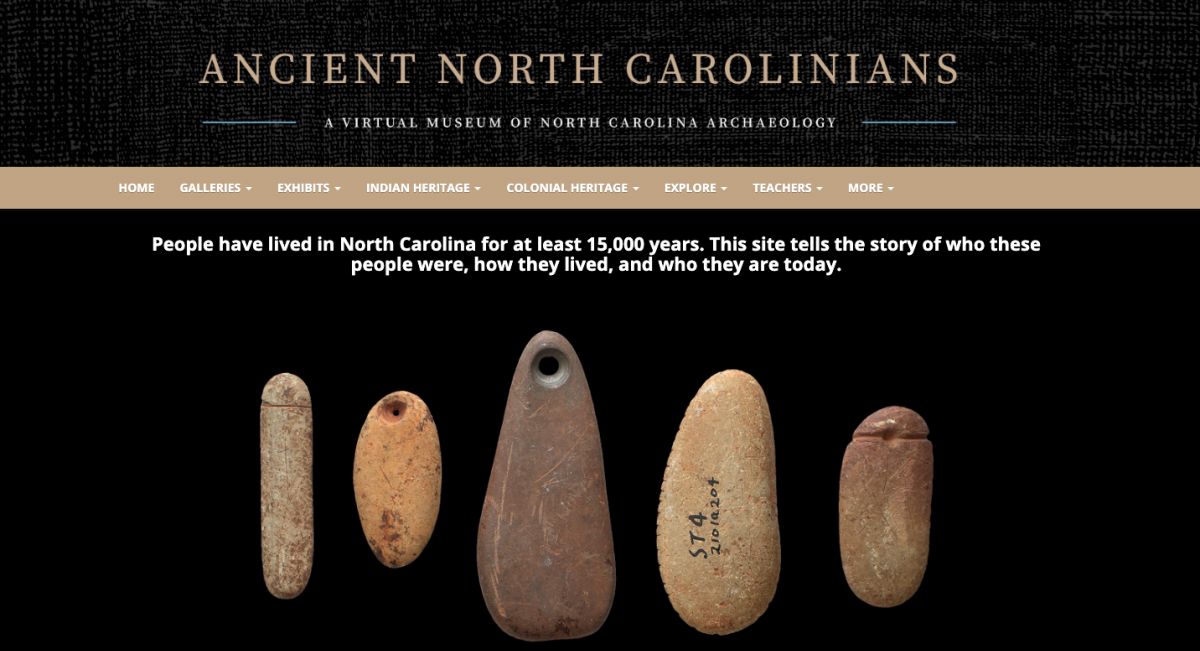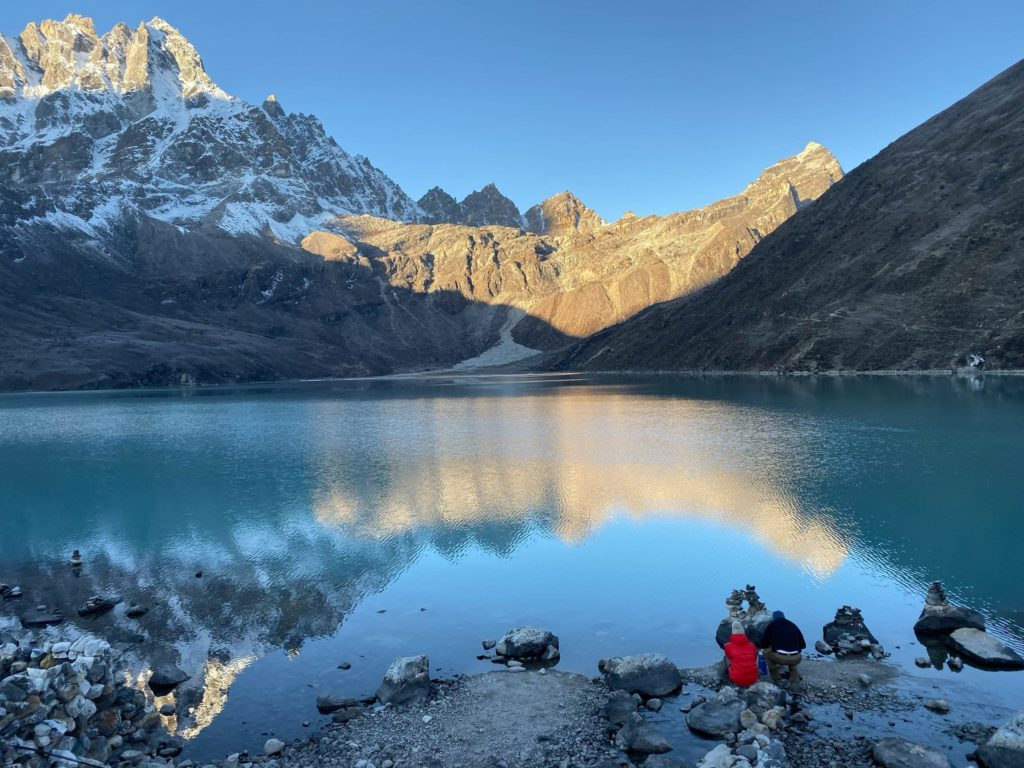AncientNC site raises awareness of the 15,000-year history of North Carolina’s indigenous populations and provides educational resources for the state’s teachers and students.

The public got its first peek at decades of work by Carolina archaeologists when the new interactive website, Ancient North Carolinians: A Virtual Museum of North Carolina Archaeology, launched Nov. 15.
Using lesson plans, travel guides and a gallery of 3D artifact images, AncientNC raises awareness of the 15,000-year history of North Carolina’s indigenous populations and provides educational resources for the state’s teachers and students.
“This website is just one more way that we’re bringing the fruits of all the research done here over the many decades out to the general public so that they can get a better perspective on who we are and how we got here,” said Vin Steponaitis, the professor of archaeology and anthropology who has led the Ancient NC project for the past three years. His own research interest focuses on the precolonial Indian cultures of the American South.
The project relies on the resources of Carolina’s Research Laboratories of Archaeology (RLA), founded in 1939 as the first center for the study of North Carolina archaeology. The RLA curates more than 8 million artifacts and 60,000 photographs and slides. It supports research in North Carolina, throughout the Americas and overseas.
A virtual museum
AncientNC serves the state of North Carolina in many ways. The website brings exhibits on North Carolina archaeology and the ancient history of the state’s American Indian peoples to anyone with access to a web browser. This history is especially relevant to North Carolina, home to 80,000 American Indians, the largest population east of the Mississippi River.
Through a comprehensive database, visitors can search topics throughout North Carolina pre-colonial and colonial history. They can view 3D images of bones, pottery shards, arrowheads and other artifacts in the RLA collection. With the click of a mouse, they can turn the image 360 degrees and zoom in to see, for example, the details of an American Indian spearhead from 1000 B.C.
The website also provides free resources for K-12 teachers and their students. In addition to the database and the 3D gallery, the website provides lesson plans and activity guides that incorporate archaeology into language arts, math and science classes.
Another purpose of the site is to boost the state’s tourism economy with travel guides to historical sites across the state. Users can click on each spot on the map to get directions and more information about archaeological sites, Indian tribes and other relevant cultural attractions.
The site will even give archaeology itself a higher profile. “In Europe and in Latin America, archaeology is a big deal. In Mexico, everybody knows about the Aztecs. In Europe, everybody knows about the Neolithic in Stonehenge. And that’s just not the same here,” Steponaitis said.
Putting it together
Graduate and undergraduate students worked with Steponaitis and RLA associate director R. P. Stephen Davis Jr. to organize the research and make it accessible for public audiences. Funding for AncientNC came from a 2014 C. Felix Harvey Award and one of the first eight grants from the Kenan Creative Collaboratory.
University archaeologists created the site to be as comprehensive as possible so even those without any knowledge of North Carolina’s 15,000-year-old history could benefit from the knowledge of the past.
“Knowing about the past helps us think about the present and future and it gives us a sense of perspective that helps us think gives us a better understanding of how we got to where we are today,” Steponaitis said.




